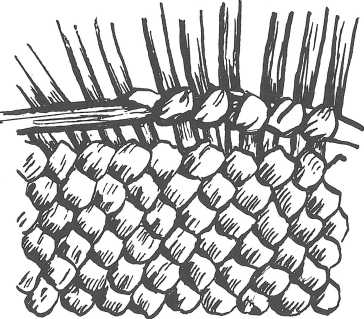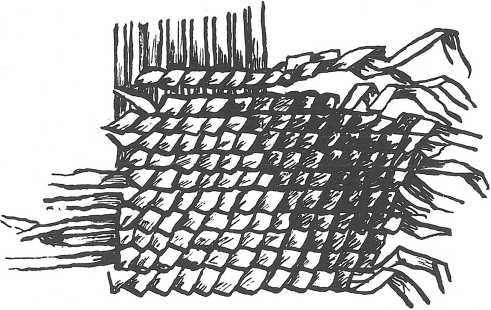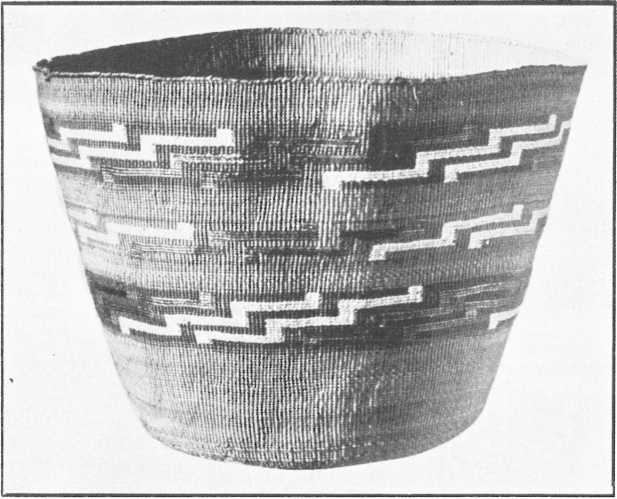TLINKIT BASKETRY OR INDIAN EMBROIDERY.
In Tlinkit Basketry, the body of the basket is worked in spruce root, which gives an exceedingly tough fiber, well suited for this especial kind of weaving in the different designs which ornament many of these baskets. These designs contain many symbols of a mythological character, making every line upon an Indian basket eloquent with meaning, could we fully understand and interpret them.
In the needle work of the Indian women’s white sisters, the working in of this third element would be called embroidery but the squaw twines it into the weaving as the basket progresses. That is, when each one of the twining or weaving threads pass between the two upright “bams” or rods outward, the colored or overlaid strips of material are wrapped around this twining thread once. Straws of different colors are largely used, and are very effective being capable of splitting into different widths. They must be soaked or dampened in water before using. We have many interesting specimens of this overlaid work, each tribe modifying and changing the process of weaving somewhat, but the general effect is quite similar.

Wrapped Twined Weaving.
The Frapped Basketry of the Skokomish is somewhat like the Tlinkit overlaying; also among the Pomos we find where this style of basketry has given some splendid specimens, they using corn-husks, squaw grass and other materials for the overlay. These baskets are coarsely finis h e d off round the top, as nearly all of the upright twined baskets seem to be. However, they are strong and substantial.


Showing the Overlaid Twining or False Embroidery.

Aleut Basket.
We have also pleasing varieties of this plain twined weaving from the Aleutian Islands. The Aleuts frequently use for their upright warp or “bams,” stems of wild rye or other grasses in which the straws are split in two parts, the two halves passing upward in a zig-zag manner; each half of one of these straws or warp being fastened alternately with the other half of the same straw and with a half of an adjoining straw, making a series of regularly shaped openings. Raphia or sweet grass could be used to advantage as the twining threads.